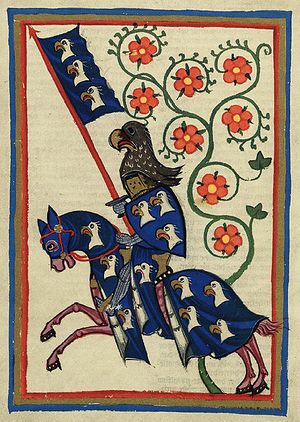Flag
There are four main types of flag in the Western European medieval period.
The pennon is what ordinary individuals might have, either attached to a lance (and then called pennoncelles), or to a small vertical pole. These can be like little right-angled triangles (long side vertical) -- a revon -- or rectangular (short side vertical), in which case they were generally swallow-tailed, that is with the outer edge having its centre cut away to leave two tails, or in the shape of an outward pointing isoceles triangle, longer/broader than high.
The banner is square or rectangular (longer side vertical), and can be used to bear someone's device. It also attaches to a vertical pole. It may or may not have its outer edge cut, rectangularly, to leave tails.
A standard is the long thin flag that leads armies etc., standing out from a pole. It can also either have a rounded outer end, or one with two rounded bumps. Or it may have swallow-tails, in which case it gets called a guidon
Finally a tall flag (higher than broad) hung by its top is a gonfalon.
Information per Heraldic Standards, (1959), Lt.Col. Robert Gayre of Gayre, rewritten by A Fool.
